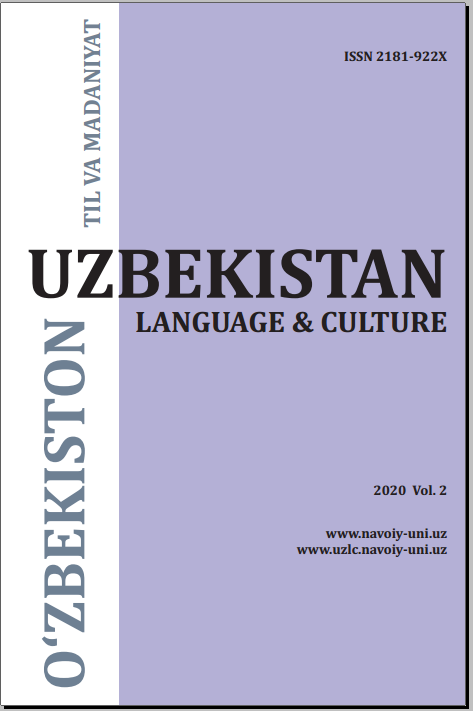Linguistic Features and Ethnolinguistic Changes of the Uzbekistan Arabs
DOI 10.52773/tsuull.uzlc.2020.2/DSHE3166
Keywords:
ethnocultural, ethnolinguistic, ethnography, understanding of ethnic identityAbstract
This article analayzes, the ethnocultural identity (understanding of
ethnic identity) and cultural ethnography of the Arabs living in Uzbekistan
are analayzed, as well as the specifics and commonalities of the Arabs
residing in different regions of Uzbekistan in relation to ethnolinguistic
changes on the basis of comparative data.
Until the mid-50s of the twentieth century, the local dialect of
Arabic was in use in dozens of villages, such as Rayimsofi, Khojakuduk,
Andabozor, Boyterak, Darcha, Qanotli, Borikhana, Pistali, Nomard,
Olachabop, Ogzikeng. Today, however, the Uzbek language is used as the
language of daily conversation and live communication, although some
forms of Arabic have survived in the above-mentioned Arab villages.
The Arabs have lived in close relationship with the local peoples
as the Uzbeks, the Turkmen, and the Tajiks. Self-awareness is the ability to
understand oneself, to understand one’s ethnic identity, namely to stand
out from others as we and theyand to preserve ethno-national values. In
particular, in the villages such as Jeynov, Jugari, Chahdari the ethnicity,
linguistic features and ethnolinguistic aspects of the Arabs have been
preserved. In the formation of the identity of the Arabs in Uzbekistan, the
peculiar language, music and dance, which are specific to the Arabs are
very well preserved only in the village of Jeynov. This is clearly seen in the
rich repertoire of the Al-Arabi ensemble formed in the village.


